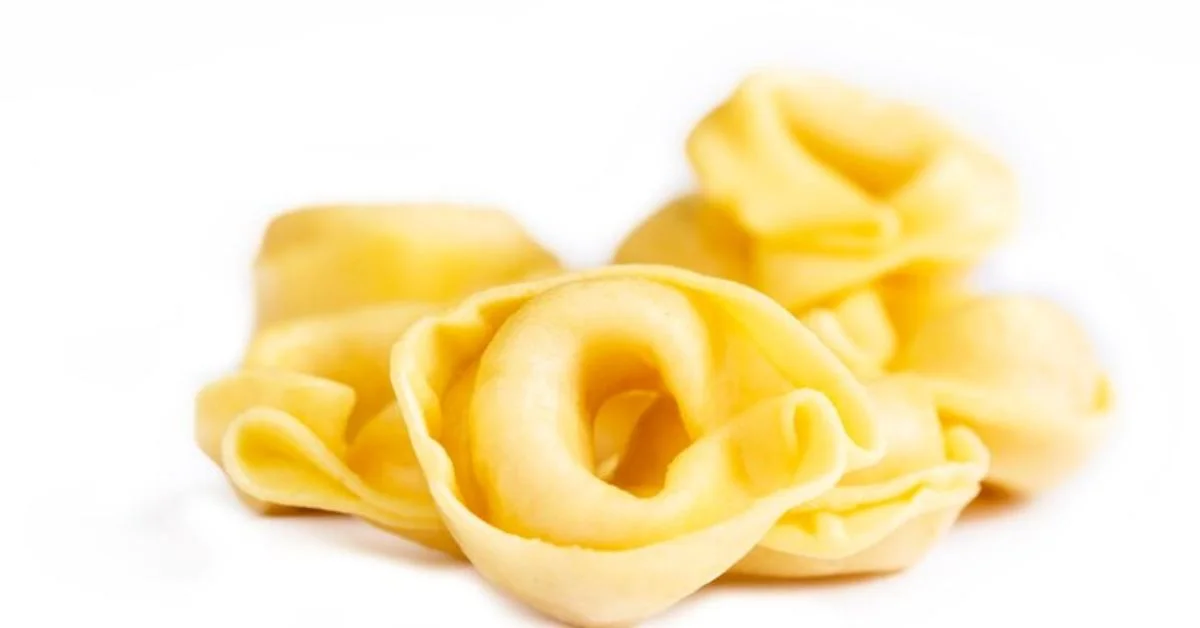In the quiet hum of an Italian pasta lab or the rhythmic clatter of a bustling food factory, one machine has redefined how tradition meets innovation—the tortellinatrice.
If you’ve searched for “tortellinatrice,” chances are you’re curious about what this intriguing Italian word refers to. You’re not alone. The term is gaining traction among culinary professionals, food historians, pasta artisans, and increasingly, home chefs exploring automation in traditional cooking. But what is a tortellinatrice? How does it work? And why is it becoming a staple in the conversation around food, culture, and craftsmanship?
The answer is both technical and cultural. A tortellinatrice is a specialized machine designed to produce tortellini, the iconic ring-shaped pasta from Emilia-Romagna. Yet, it’s not just about mechanics—it’s a reflection of how Italy preserves heritage through technology, blending artisanal shapes and flavors with industrial precision.
This comprehensive guide dives deep into the origin, function, design, cultural relevance, and future of the tortellinatrice, bringing clarity and depth to an emerging topic in global food conversation.
What Is a Tortellinatrice?
The term “tortellinatrice” comes directly from Italian:
- Tortellini – a type of filled pasta, typically shaped like a small ring.
- -trice – a feminine suffix denoting a machine or person performing an action.
Thus, a tortellinatrice is a machine that makes tortellini.
But this definition, while accurate, barely captures the complexity of what a tortellinatrice actually does. It’s not simply a pasta press or dough roller—it is a precision tool capable of:
- Rolling fresh pasta sheets to exact thickness
- Dosing and placing filling (usually meat, cheese, or vegetables)
- Shaping and sealing each tortellino uniformly
- Repeating the process at scale while preserving structural and aesthetic consistency
In traditional kitchens, this is a delicate manual task. The tortellinatrice replicates this delicacy—mechanically.
A Brief History: From Handmade to Mechanized Elegance
Origins of Tortellini
Tortellini are said to have originated in Bologna or Modena, with legends linking their shape to the navel of Venus. Traditionally made by hand, these small filled pasta rings are a hallmark of Italian culinary precision.
Making them by hand requires skill, patience, and uniformity. Each tortellino must be:
- The right thickness
- Properly filled (not too much or too little)
- Folded and sealed to preserve shape during boiling
This craftsmanship became the benchmark for quality.
The Arrival of the Tortellinatrice
As demand for tortellini grew—first in Italy, then across the world—food producers faced a dilemma: How can one scale the production of a dish so reliant on artisanal form?
In the mid-to-late 20th century, Italian engineers and food technologists began developing semi-automatic and fully automatic tortellinatrici. These machines allowed for:
- Mass production without compromising shape
- Customization for fillings and size
- Consistency across thousands of units per hour
Today, the tortellinatrice stands as a testament to culinary engineering: a machine born not to replace artisans, but to amplify their legacy.
How a Tortellinatrice Works: Step-by-Step
Let’s unpack what goes on inside this machine, step by step.
1. Dough Feeding and Sheet Rolling
Fresh pasta dough is placed into the hopper. The machine automatically rolls the dough into ultra-thin sheets, typically 0.6 to 0.8 mm thick.
Precision here matters—a sheet that’s too thick results in chewy pasta; too thin and it breaks during shaping or cooking.
2. Filling Deposition
Depending on the model, the tortellinatrice uses rotary or piston-based mechanisms to deposit measured amounts of filling onto the pasta sheet.
The goal is consistency—the same weight, placement, and density for every piece.
3. Folding and Shaping
The sheet advances to a folding station, where a system of rollers, molders, and pneumatic arms gently folds the sheet and seals each unit. This is where the pasta is shaped into its iconic “navel” form.
Advanced machines simulate the curving motion of fingers, mimicking the traditional twist of hand-made tortellini.
4. Cutting and Output
Finally, each piece is cut cleanly and moved to a tray or conveyor belt for freezing, drying, or immediate cooking.
Some high-end tortellinatrici include optical sensors to reject misshaped units automatically.
Varieties of Tortellinatrici: For Every Scale
There’s no one-size-fits-all when it comes to tortellinatrici. Models vary depending on:
- Volume: Home-use, artisan batch, or industrial scale
- Automation: Manual assist, semi-automatic, fully automatic
- Customization: Adjustable filling heads, different mold types
- Output: Ranges from 10 kg/hour to 500+ kg/hour
Popular Categories
| Type | Description | Use Case |
| Tabletop Models | Compact, manual-feed machines | Restaurants, boutique producers |
| Semi-Automatic | Requires operator input for dough/filling | Small factories, labs |
| Fully Automatic | Continuous production with integrated conveyors | Industrial pasta production plants |
| Multi-format | Switchable heads for different pasta (e.g., ravioli) | Flexible operations |
Why Use a Tortellinatrice?
The tortellinatrice is more than a machine—it’s a strategy. Here’s why chefs, producers, and businesses invest in them:
1. Consistency
Every tortellino comes out uniform in weight, shape, and thickness—essential for presentation, cooking, and packaging.
2. Speed
Where an expert artisan might make 100 tortellini an hour, a machine can produce up to 10,000 in the same time.
3. Cost Efficiency
In large operations, the labor costs saved through automation are significant. Less waste, fewer errors.
4. Product Safety
Mechanization ensures hygienic production under HACCP and other food safety standards.
5. Customization for Innovation
With changeable dies and filling heads, producers can create novelty tortellini—like vegan, gluten-free, or fusion variants.
The Cultural Question: Does a Machine Diminish Art?
This is the heart of the debate. Critics argue that machines like the tortellinatrice erase human touch—the soul of Italian cooking.
But many chefs and producers see it differently:
- Machines preserve tradition by scaling it.
- Artisans can focus on innovation and flavor, not repetition.
- Quality control becomes easier, ensuring wider access to authentic food.
The tortellinatrice, then, is not the death of tradition. It’s a new chapter in its preservation.
Leading Brands and Innovators
Several Italian manufacturers dominate the market:
- IMA Group – High-performance food machinery
- La Monferrina – Specializes in compact, artisan machines
- Pama Roma – Known for modular pasta lines
- Dominioni Punto & Pasta – Offers hybrid machines with classic forming aesthetics
These companies are evolving tortellinatrici to include:
- Touchscreen controls
- Remote diagnostics
- Energy-efficient motors
- Food-safe 3D-printed parts
The Future of Tortellinatrici: Smart Pasta Machines?
As AI and IoT enter the food world, expect new features:
- Smart yield analytics: Adjust recipes in real-time for batch precision
- Recipe memory systems: Save parameters for different dough types
- Blockchain integration: Trace pasta from flour mill to final plate
- Self-cleaning units: Reduce downtime in commercial kitchens
The next generation of tortellinatrice won’t just make pasta. It will learn how to make it better.
Conclusion
The tortellinatrice may seem like a niche machine, but its story is far-reaching. It represents the fusion of heritage and innovation, proving that food technology doesn’t have to compromise authenticity—it can amplify it.
From local trattorie to global food factories, this elegant machine is quietly shaping the pasta of the future, one perfect fold at a time.
In embracing the tortellinatrice, we don’t abandon tradition—we multiply its reach. We ensure that the rich legacy of tortellini survives not only in Italian kitchens, but in dishes shared across the world.
FAQs
1. What exactly does a tortellinatrice do?
A tortellinatrice is a machine that automates the production of tortellini, rolling dough, inserting filling, and shaping the pasta into its signature ring form.
2. Is a tortellinatrice only used in large factories?
No. While many are industrial, compact versions exist for small restaurants, pasta boutiques, and even home kitchens.
3. Can the tortellinatrice be used for other pasta types?
Some models are versatile and include attachments for ravioli, cappelletti, and other stuffed pastas, depending on the manufacturer.
4. Does machine-made tortellini taste different from handmade?
Flavor largely depends on ingredients. While handmade versions may have slight textural differences, high-end machines replicate shapes closely and consistently.
5. Are tortellinatrici expensive?
Prices vary greatly. Artisan tabletop models may cost a few thousand euros, while industrial systems can exceed €100,000, depending on output and features.
For more information, click here.









